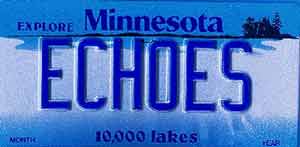
.echoes
.com
A division of ApSCo. Microware
 |
www
.echoes .com A division of ApSCo. Microware |
|
|
|
|
|
|
|
|
|
|
|
|
|
|
|
|
|
||||||||||||

MontereyThe first and only Monterey International Pop Festival was held for three days, 16-18 June 1967. This was during the "Summer Of Love" just days after the Beatles' "Sgt. Pepper's Lonely Hearts Club Band" was released. The latest Beatles release marked a turning point in rock music history, and together with Monterey helped to show where rock was going. "Sgt. Pepper" was the beginning of a new era for the Beatles, a studio recording career, since they retired from the stage. The live atmosphere of the album was a nice juxtaposition to the fact that no one was ever going to hear the Beatles perform live ever again. Despite their withdrawal from the stage the Beatles were interested in live performance as Paul McCartney was the talent consultant for Monterey, the first large rock festival. Monterey Pop turned out to be the root of every rock festival to come, most notably Woodstock and Live Aid, but for different reasons. Monterey was different from all of the other rock gatherings because "the seekers at Monterey had assembled not for a freak out but for a tune in - the first international pop festival." (1) Twenty-five hours of music in two and a half days brought over 50,000 people together. Bay Area musicians like the Grateful Dead and Jefferson Airplane performed with the first major US appearance of the Who, Jimi Hendrix, and Janis Joplin, all of whom would later be major attractions at Woodstock. Only the Who would perform at Live Aid. This was the beginning of a long practice of the Who performing at benefit concerts. Although Monterey was supposed to be a charity event the profit of over $200,000, made primarily from the sale of TV rights to ABC-TV, the distribution of the money was somewhat questioned. The important fact is that Monterey was the first rock festival, as well as the first charity rock festival. However, it took over a dozen years for the next charity rock festival of this size to occur, i.e. the MUSE concerts.
And so the Monterey International Pop Festival became the first pow wow of the love crowd, the perfect pastoral, choked with music and warmhearted people. Its success was so unprecedented that it took everyone by surprise. You see, at the beginning, nobody was really sure that the love crowd was out there. (2) This love crowd would be the driving force behind rock music and its festivals for the next three and a half years until the Rolling Stones' concert at Altamont, which some suggest effectively ended the sixties from a musical and communal standpoint. This sense of community would slowly grow out of the San Francisco area and reach its highest point at the meeting of the Woodstock Nation. Musically, Monterey Pop was a spectacle never before seen anywhere in the world; an amazing lineup especially since all of the artists donated their time for free. This was a meeting of unknown, well known, and soon to be legendary bands: a "surprising proportion of inventive musicality and polished showmanship." (3) From the club scene in London, "the Who and Jimi Hendrix were preparing for a battle of the bands." (4) They were the two bands to stand out from the rest because of their outrageous styles and group dynamics. The destructiveness of the Who is consistent theater, deriving from the group's defiant, lower class stance. I suppose Hendrix's act can be seen as a consistently vulgar parody of rock theatrics, but I don't feel I have to like it. Anyway, he can't sing. (5) Almost as a response to the Who completely trashing their set, which originally started out of true mod anger but at this point was mostly theatrical, Hendrix lit his guitar on fire using lighter fluid. These, however, were the exceptions to the rule: "Superficially, at least, the atmosphere was not especially competitive." (6) This is understandable considering the wide range of talent and musical style. Monterey was a pop festival, not a battle of bands, which was something the Who and Hendrix had going between themselves. Indian raga master Ravi Shankar performed for an entire afternoon. While his music is not rock or pop, his eastern style of music had recently become popular due to its integration into the music of the Beatles. The crowd was not totally aware of what Shankar's music was really like since they applauded after he finished tuning his sitar, which had taken a long time. The true significance of Monterey is that it did succeed for several different reasons. It was the first gathering of the "love crowd," which not only showed that they did exist but also they could get together without any problems. The open use of marijuana without fear of breaking the law was experienced. These advancements in the acceptance of the underground culture helped to create the road to Woodstock. The festival showed that several different musical styles can come together under the same heading and draw an crowd. If it were not for Monterey, the later popularity of Indian music or the hard-rocking British styles, would have not become possible. Unfortunately, the establishment was not prepared for all of the activities of the underground, which is understandable. After the festival, a proposal was passed to prevent the State Fair Board from booking any event that would attract more than two thousand visitors without the permission of the city. In other words: no more Pop Festivals. (7) The significance of this is that Monterey, like so many other festivals
to come, never had the chance to be repeated. While this let festivals
like Woodstock and Altamont shape the course of rock music, it denied
a chance for future Monterey International Pop Festivals to have their
influence.
|